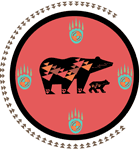"Circles have been developed most extensively in the Yukon, Saskatchewan, and Manitoba. They are also occasionally used in other Canadian communities, and in the United States where Navajo peacemaking courts have also used circles. The initial US use of circles in mainstream criminal justice was in 1996 in Minnesota. The process is now used throughout North America and in other parts of the world for both juvenile and adult offenders and in a wide variety of offenses and settings."
"As with the restorative processes of mediation and conferencing, circles provide a space for an encounter between the victim and the offender, but it moves beyond that to involve the community in the decision-making process. Depending on the model being used, the community participants may range from justice system personnel to anyone in the community concerned about the crime. Everyone present, the victim, the victim's family, the offender, the offender's family, and community representatives are given a voice in the proceedings. Participants typically speak as they pass a "talking piece" around the circle. The process is value driven. Primarily, it is designed to bring healing and understanding to the victim and the offender. Reinforcing this goal of healing is the empowerment of the community to be involved in deciding what is to be done in the particular case and to address underlying problems that may have led to the crime. In reaching these goals, the circle process builds on the values of respect, honesty, listening, truth, sharing, and others. Participation in the circle is voluntary. The victim must agree to attend without any form of coercion. The offender accepts his/her guilt in the matter and agrees to be referred to the circle. Especially for the native communities, it is important for the offender to have deep roots in the community. Each circle is led by a "keeper", who directs the movement of the talking piece. Only the person holding the object is allowed to speak, ensuring that each person has an opportunity to be heard."
Retrieved from http://restorativejustice.org/restorative-justice/about-restorative-jus…

